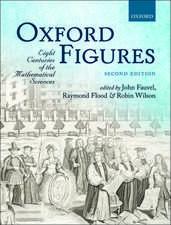Reasoning in Physics: The Part of Common Sense
Autor L. Viennoten Limba Engleză Paperback – 30 noi 2001
This book is intended for teachers and teacher trainers principally, but students can also benefit from it to improve their understanding of physics and of their own ways of reasoning.
| Toate formatele și edițiile | Preț | Express |
|---|---|---|
| Paperback (1) | 638.11 lei 6-8 săpt. | |
| SPRINGER NETHERLANDS – 30 noi 2001 | 638.11 lei 6-8 săpt. | |
| Hardback (1) | 644.49 lei 6-8 săpt. | |
| SPRINGER NETHERLANDS – 31 aug 2001 | 644.49 lei 6-8 săpt. |
Preț: 638.11 lei
Preț vechi: 750.72 lei
-15% Nou
Puncte Express: 957
Preț estimativ în valută:
122.10€ • 127.48$ • 101.05£
122.10€ • 127.48$ • 101.05£
Carte tipărită la comandă
Livrare economică 04-18 aprilie
Preluare comenzi: 021 569.72.76
Specificații
ISBN-13: 9781402002748
ISBN-10: 1402002742
Pagini: 248
Ilustrații: XVI, 230 p.
Dimensiuni: 155 x 235 x 13 mm
Greutate: 0.35 kg
Ediția:2001
Editura: SPRINGER NETHERLANDS
Colecția Springer
Locul publicării:Dordrecht, Netherlands
ISBN-10: 1402002742
Pagini: 248
Ilustrații: XVI, 230 p.
Dimensiuni: 155 x 235 x 13 mm
Greutate: 0.35 kg
Ediția:2001
Editura: SPRINGER NETHERLANDS
Colecția Springer
Locul publicării:Dordrecht, Netherlands
Public țintă
ResearchCuprins
The main lines.- Physics: what is essential, what is natural?.- A trend in reasoning: materialising the objects of physics.- The real world: intrinsic quantities.- The essential: laws for quantities “at time t”.- Quasistatic or causal changes in systems.- The impact of common sense Some investigations.- Quantities, laws and sign conventions.- Changing frames of reference at eleven.- Common reasoning about sound.- Constants and functional reduction.- Rotation and translation: simultaneity?.- From electrostatics to electrodynamics: historical and present difficulties.- Superposition of electric fields and causality.
Recenzii
`Viennot and colleagues at Université Denis Diderot (France) clearly demonstrate the value of didactics--the science of teaching, or pedagogy. Their book is based on surveys involving students at various education stages, from secondary school to the university. They carefully chronicle the many twists and turns of common sense or natural reasoning and seek out how best to cultivate a habit of scientific thought. Among many other results, they find a strong natural tendency for students to materialize the objects of physics, to consider quantities as intrinsic characteristics of objects, to apply causal linear reasoning, and to spuriously neglect extra variables. Viennot and colleagues analyze such reductionist tendencies in detail and recommend that multifunctional dependencies be introduced early. They indicate that less emphasis on formulae, combined with a better balance of qualitative and quantitative reasoning skills, would cultivate ways of thinking that provide greater coherence and reliability. They end the book with a plea for the teaching of reasoning in physics. Graduate students through professionals.'
T. Eastman, formerly University of Maryland in Choice, April 2002
T. Eastman, formerly University of Maryland in Choice, April 2002









